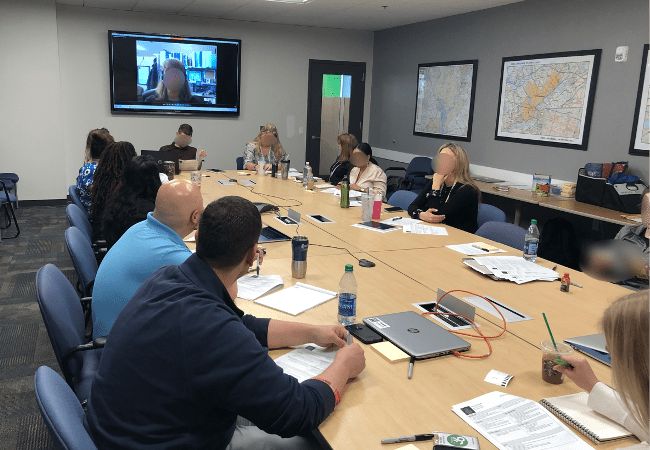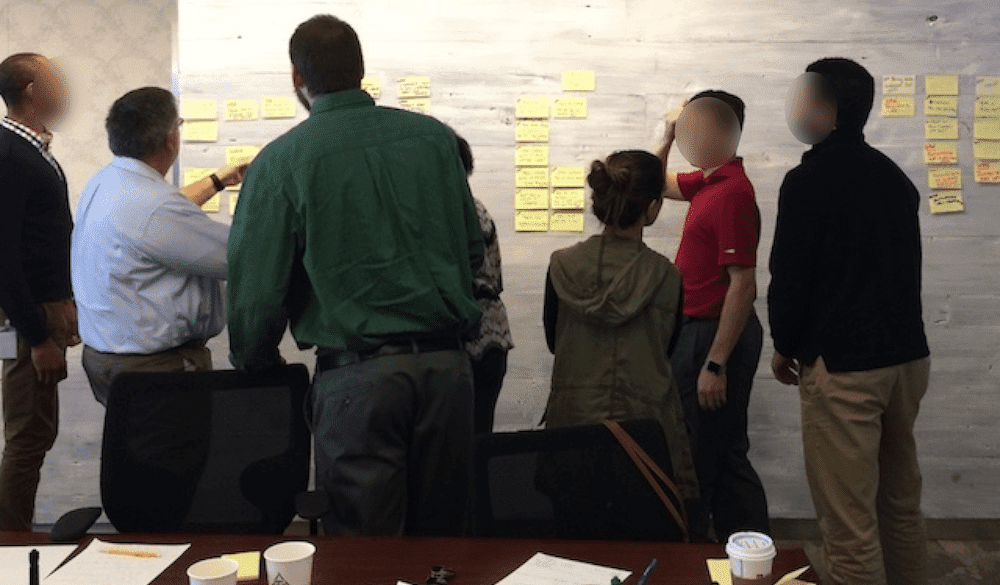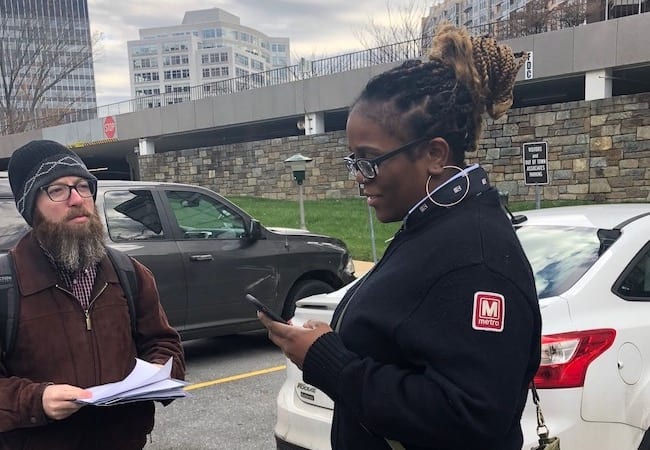Ongoing Research Program Case Study:
A Year in the Life of an Enterprise User Research Program: GEICO

At Marketade, we like to say we are small but mighty because, with a team of only 4 to 8 people over the last 10+ years, we’ve done some amazing work with a number of large organizations — McDonald’s, Verizon, Stanford, NIH, United Nations, and others.
When we ask for feedback, some of our enterprise clients tell us they like working with us because we are small enough to be nimble and flexible enough to work as an extension of their teams.
Over the years, a number of clients have worked with us via long-term retainers or what we call ongoing research programs. Before we started working with them, most of these companies were doing a few user research projects a year, but their studies were inconsistent, insufficient to meet their strategic goals, rushed or late, and reactive instead of strategic.
Here’s how we worked with one such long-term retainer client — GEICO — to turn their research projects and programs into valuable tools that help meet their goals.



1 Year of Work: A Snapshot
We’ve worked with GEICO for over 10 years. Here’s an overview of our GEICO work in 1 recent year.
- We led 36 research projects with consumers as well as GEICO customer service staff.
- We conducted 9 stakeholder workshops and ideation sessions with GEICO teams.
- We worked with 13 different teams in GEICO’s organization.
- We wrote a weekly industry insights report for a large internal audience.
- We contributed regularly to their weekly executive-facing status report with summaries of our latest findings.
The majority of this work was done by 4 Marketade researchers. As they worked on GEICO projects, these team members also juggled work for 1 or 2 other clients. Our small team’s ability to produce this much work for one client in a year is evidence that you don’t need an army of full-time researchers to do the same!



Our Process
There are a handful of procedures that enabled us to help GEICO meet and exceed their goals over the course of the year.
Open, Regular Communication
We learned pretty quickly that our work would only have legs within GEICO’s large company if we found ways to communicate about it at a few levels. At the highest level, we had an executive sponsor who managed our budget and found it valuable to understand the cost of each project monthly. Thus, we tracked our work and expenses at the project level, and calculated totals for each project each month in a report that we sent with our invoice.
We also provided a weekly project status report to GEICO’s team leads and project managers. This report included the following information:
- Project Name: We were careful to use the same name as what GEICO was using internally so they could recognize and share it.
- Project Contacts: We listed the main point of contact on the GEICO side and the project lead on our side so that anyone reading the report could get in touch with the right person as needed.
- RAG Status: This is a quick and easy way to communicate the status of a project using the colors from a traffic light: red, amber, green. Different project managers use different meanings for the colors. For us, in this report, they mean the following: Red: The work on the project has stopped and we don’t have a working solution for the problem; Amber: The work on the project has stopped or slowed and we do have a working solution for the problem; the schedule has been impacted; Green: The project is moving forward as planned.
- Last Week’s Activity: A short sentence or two about what was accomplished last week.
- This Week’s Activity: A short sentence or two about what we planned to accomplish in the upcoming week, plus an indication if the project was on track to be completed by the planned due date.
In a separate weekly report, we communicated our availability for new projects based on our current workload and budget spend to date. This report went out to the team leads that were empowered to initiate projects with us. We also met with this group biweekly to discuss upcoming projects that they were aware of, and ideas we had for new projects based on the work our team was doing with their teams.
Lastly, we met quarterly with GEICO team leads in order to talk about our aggregate accomplishments to date and discuss upcoming priorities. This meeting allowed our teams to take a 10,000-foot view of our work and think of it from a strategic perspective within the context of their larger organizational goals. This was also an opportunity for GEICO stakeholders to share any shifting priorities with us, which they frequently did. Flexibility is a valued strength of our team, and we knew we needed to provide GEICO with plenty of opportunities to let us know what their new priorities were. They used the biweekly meetings and this quarterly meeting to do that.
Planning and Resourcing
Internally on the Marketade side, we met weekly to compile the information needed for the weekly status report. In the same meeting, we touched base with our researchers about their upcoming availability for new projects, any ideas they had for new projects based on current work, and how we stood in terms of our budget use.
This gave our team members working on different projects at any given time a chance to connect with each other and draw from each other’s work. It also gave our project manager a bird’s eye view of what different team members were working on over time. This process helped us resource new projects. For example, say a project focused on a particular area of the mobile app came up. We knew from our weekly meeting when a practitioner was just finishing a different mobile-app project and might have the best insight into that area.



Keys to Success
A few of our methods and programs stand out as having particularly contributed to a successful, productive year of work for GEICO.
High-Quality, High-Touch Research
We specialize in qualitative, one-on-one interview-style research — from testing the usability of a live product to testing the value of a new concept to understanding a competitor’s experience. This means that for any one study, we used a relatively small number of participants. With such low numbers, it was important to find the right participants, and we took pains to do that.
We conducted our own recruiting, and gathered participants from all over the country with a wide range of characteristics, depending on the particular study at hand. We went through a 2-step screening process that involved a written screener and a telephone screening process as well.
We were also able to recruit participants for specific studies when they were in the process of using GEICO’s services or were about to start. This ability to capture “in progress” experiences was an invaluable tool for GEICO to see what was working and what wasn’t, or troubleshoot a particular process where they were losing people for previously unknown reasons.
Along the same lines, we found people that were about to seek quotes for GEICO’s services, and we were able to provide real-world feedback on GEICO’s and competitors’ quote process in order to help them improve it.
Collaboration at Every Turn
With all clients, we try to avoid taking an expert approach where we gather requirements and disappear to do all the research and analysis before delivering a lengthy report. We have found again and again that teams do not read these reports because they have little investment in the observation and thinking process that goes into them.
Working with GEICO was no different. We pulled them into our process as much as possible, by facilitating 9 collaborative analysis and ideation workshops. Because GEICO teams watched user interviews, participated in the analysis process, and contributed their subject-matter expertise, they were invested in the findings and solution ideas. This gave our recommendations legs at their organization.
Research Programs
One of the ways we were able to make the research more strategic and impactful was by starting programs around key strategic priorities that GEICO identified. These programs involved a series of research projects centered around a particular theme.
Some of the themes were content strategy and testing across products and properties, customer service application usability, and landscape research where we tested the experience of other companies. The landscape program was not limited to other financial services companies; we also explored apps, websites, and products in other industries that offered the same or similar experiences.



We assigned a person on our team to own each of these programs. This meant that person would have insight into any projects related to the program even if they themselves were not leading the project or if they were not the only person working on it.
Having program owners allowed particular team members to develop a deep, rich understanding of GEICO’s focus areas. Program owners regularly worked with GEICO team leads to collaboratively review the work within that area and brainstorm new ideas. As individual projects within our programs ended, program leads took the opportunity to look back on the project and program more generally, find ways to improve, areas to dig deeper, and uncover insights that were worth sharing with a larger audience.
A Valuable Year of Research
To summarize, our small team of consultants delivered many high-value research projects and programs to GEICO in one year. We did this by using a process framework that involved open, frequent communication and some nuts-and-bolts planning steps on a regular basis.
The most important components of the work boiled down to three things: high-quality research, frequent collaboration, and the use of strategic programs. We pulled off such high-quality research by using a stringent recruiting process and through in-depth interviews that were well-designed and moderated. We brought GEICO in on the process at every opportunity. And we designed research programs around themes that GEICO identified as important.



More Case Studies
3 Highlights from Marketade’s Work with Epsilon
This top-5 U.S. ad agency works with some of the biggest banks and pharma companies in the world. Here are highlights from some of the projects we’ve teamed up on.
How a Mixed-Methods Research Program Tripled Leads in 1 Year and Drove a User-Centered Culture
A 4-step qual/quant research process became a habit and success story across a 4,000-person company. A once-skeptical VP became the company’s cheerleader for user research, helping to spread user-centered design to new business units. Along the way, the team increased conversions by 2000%.